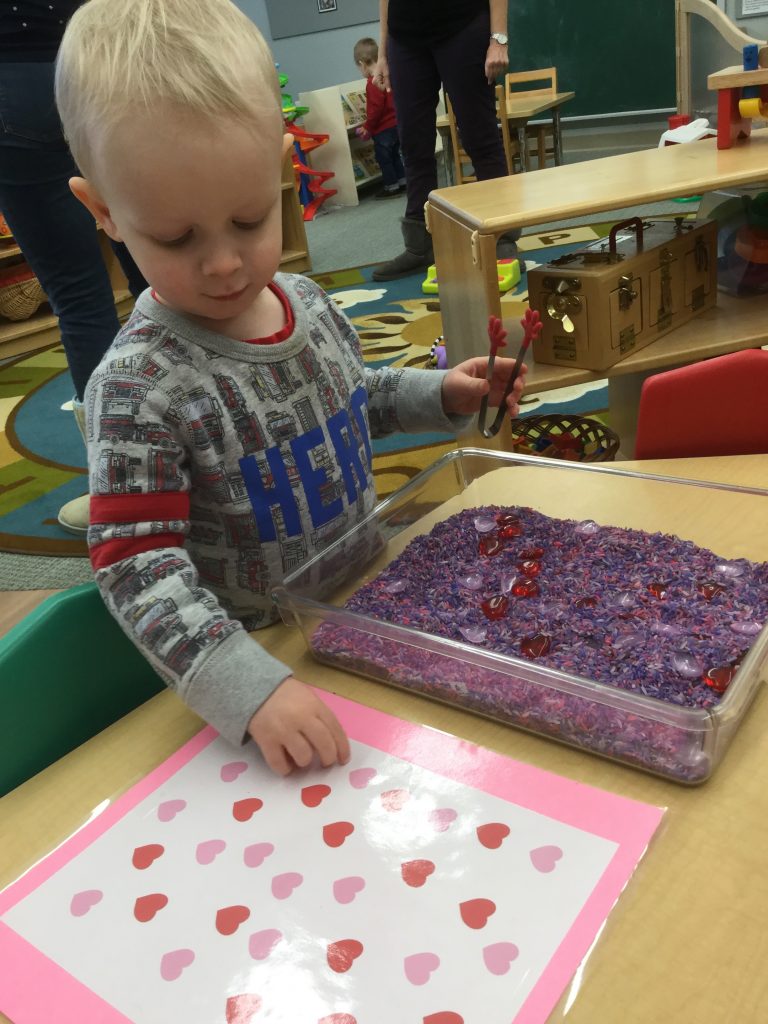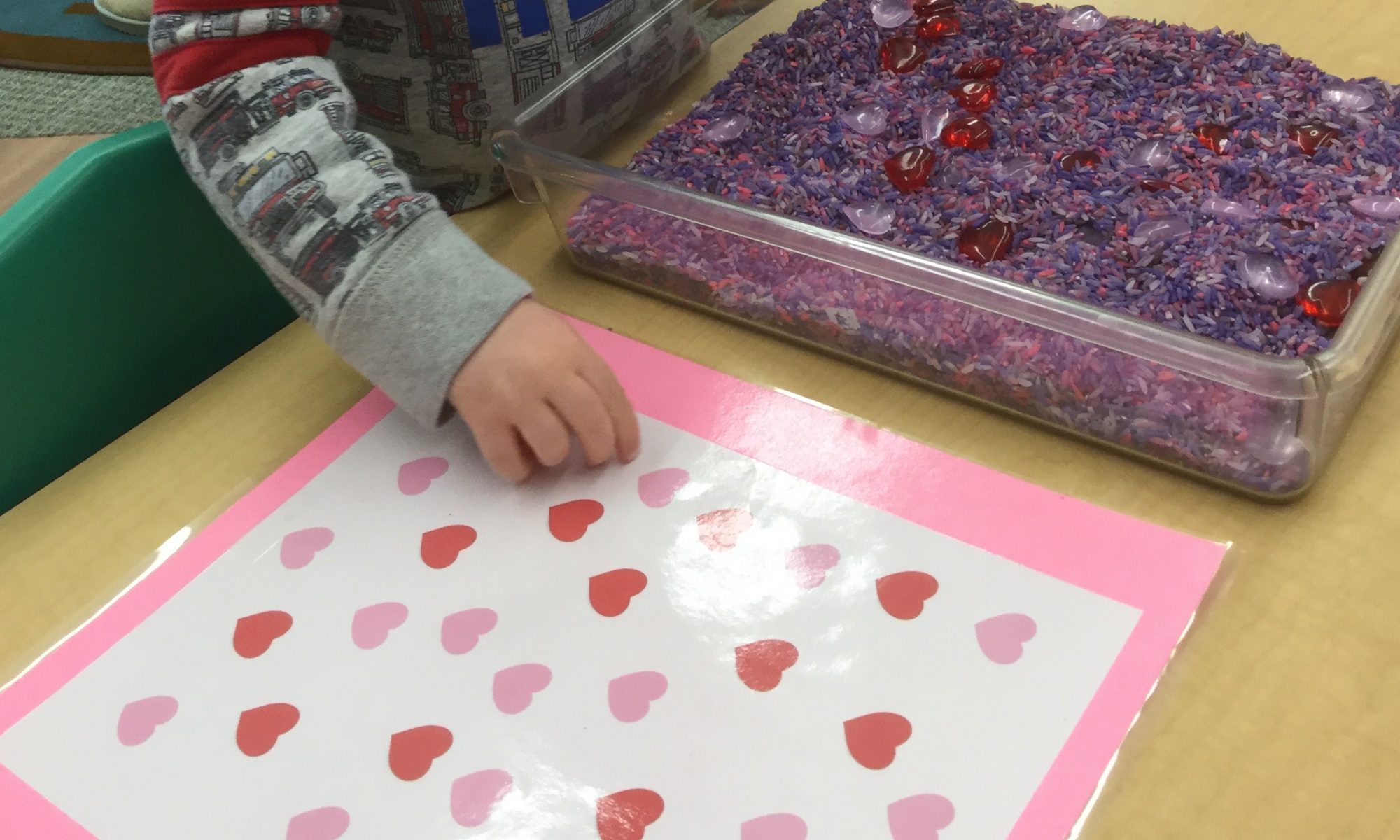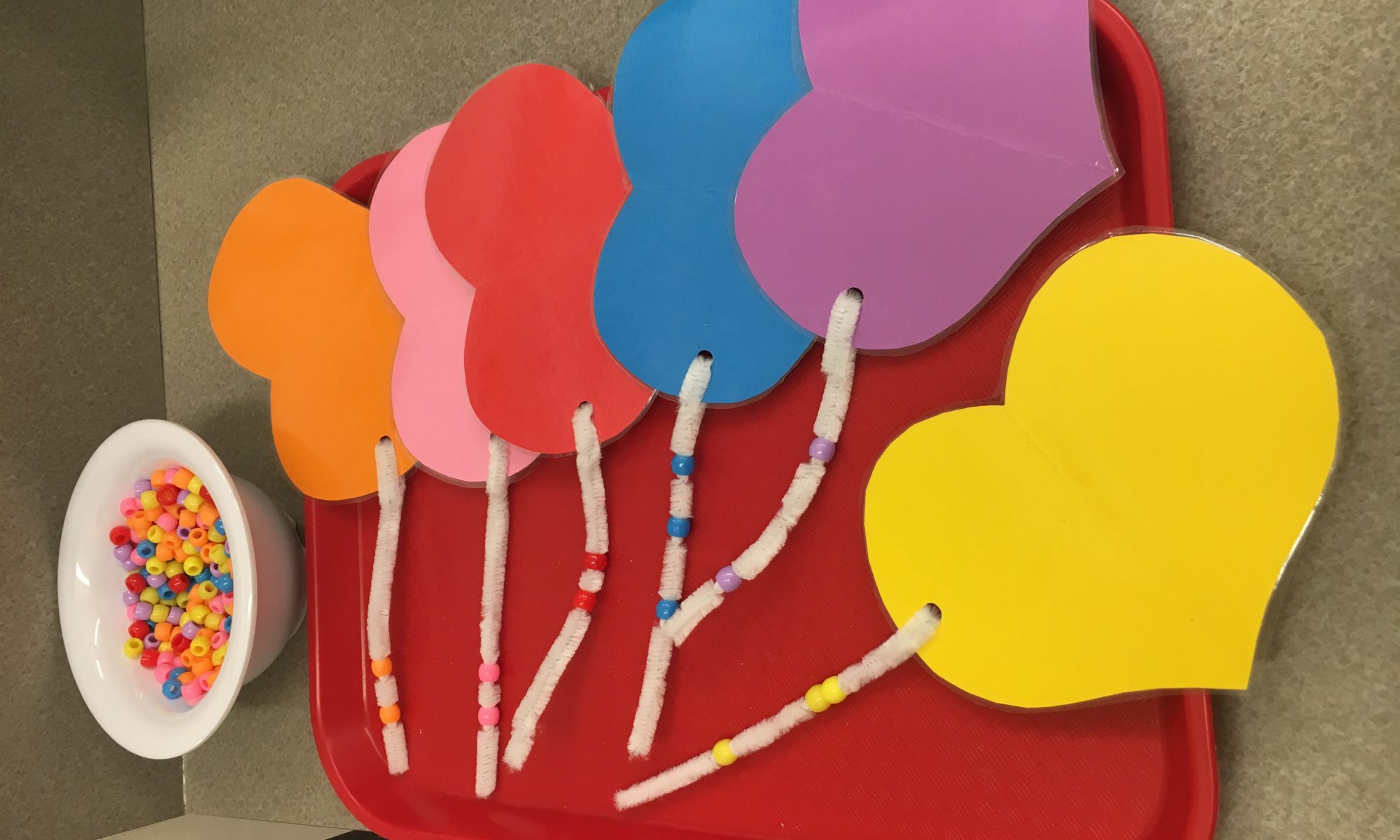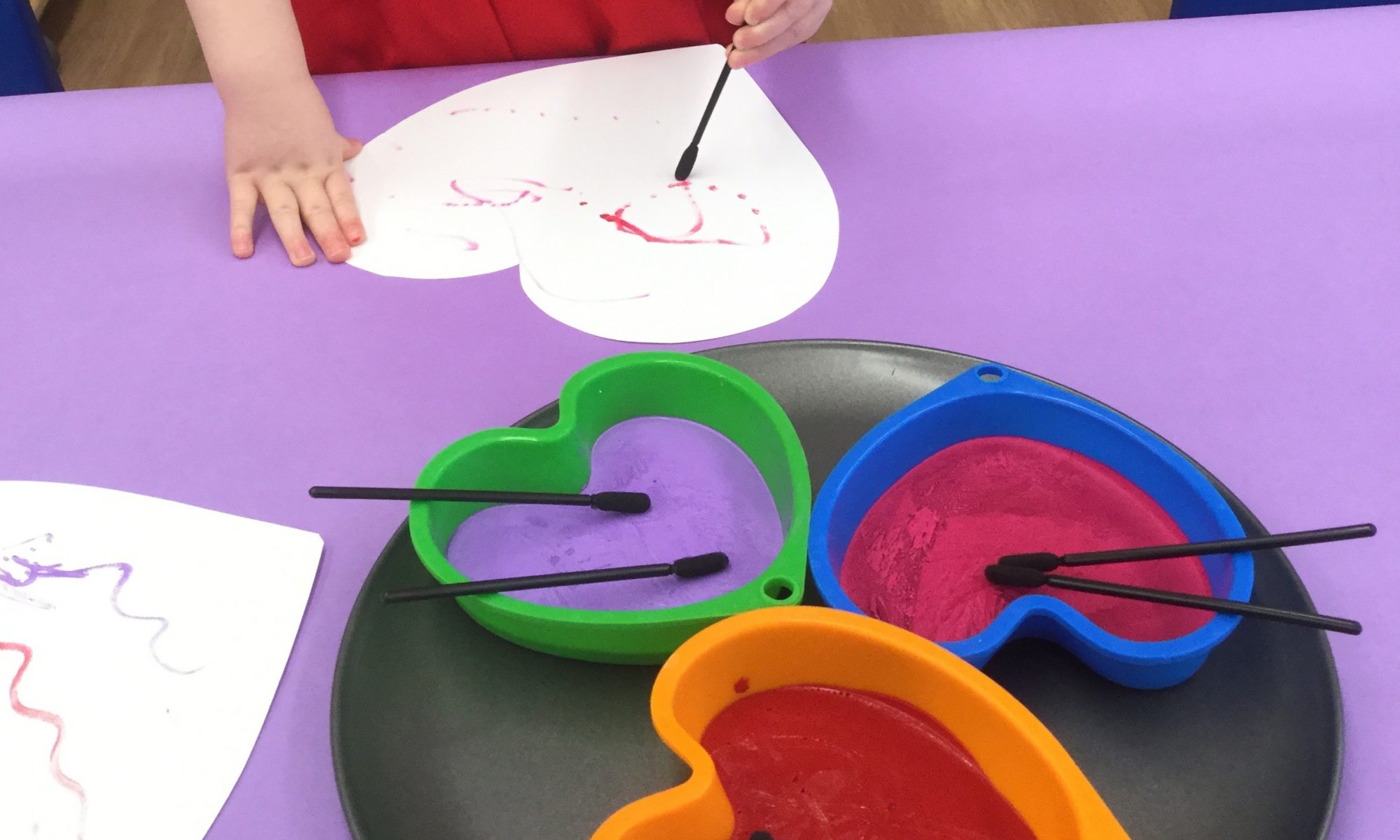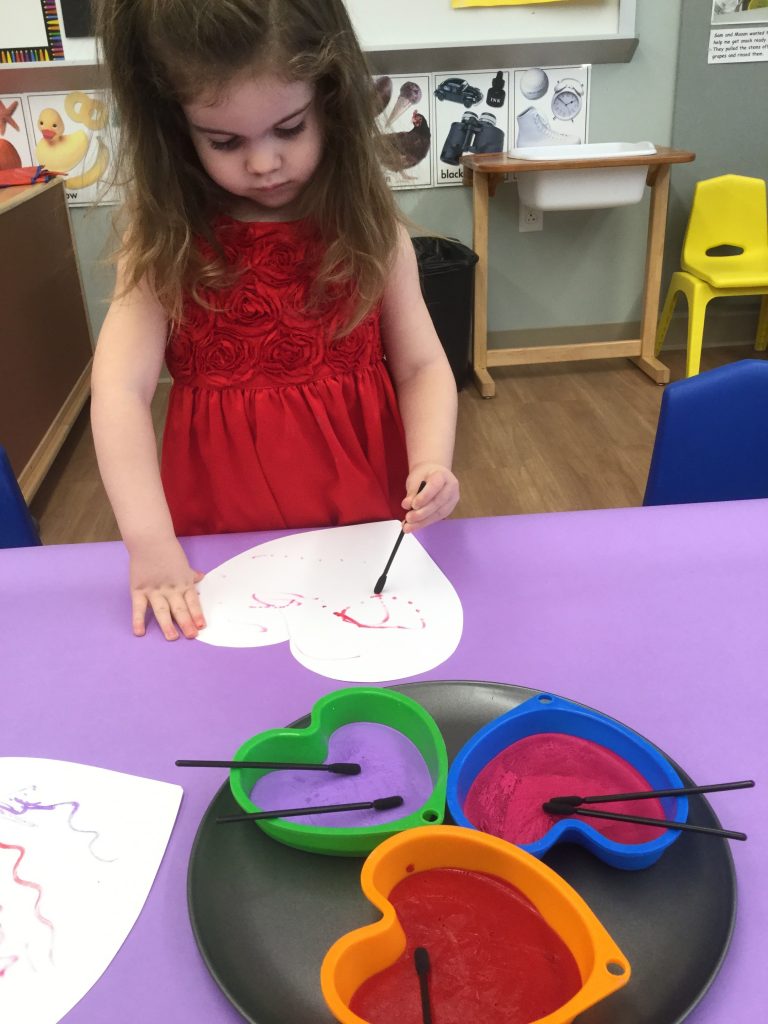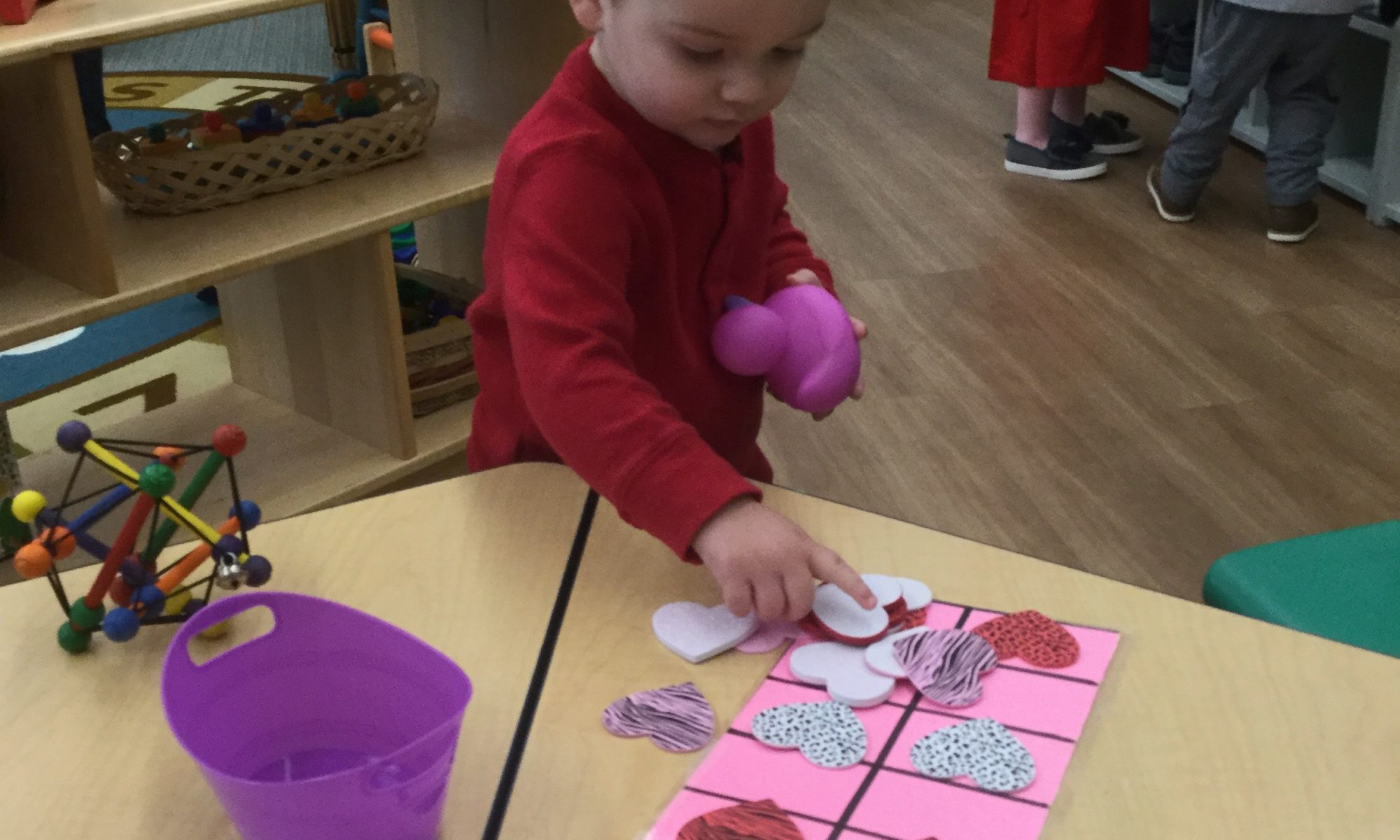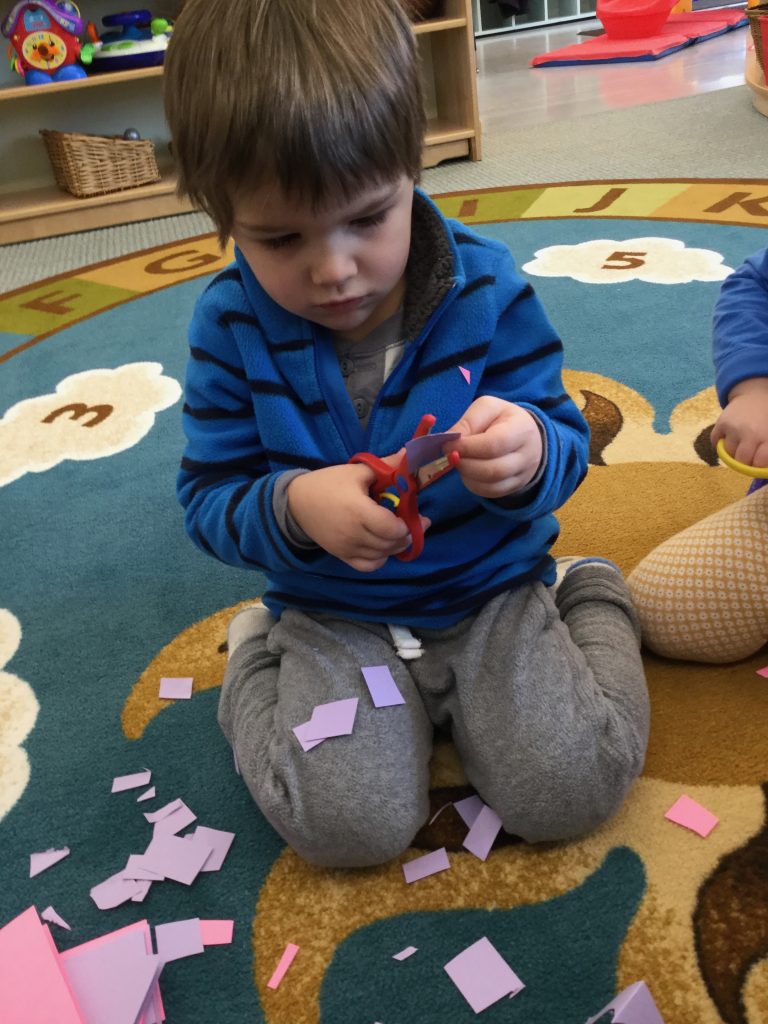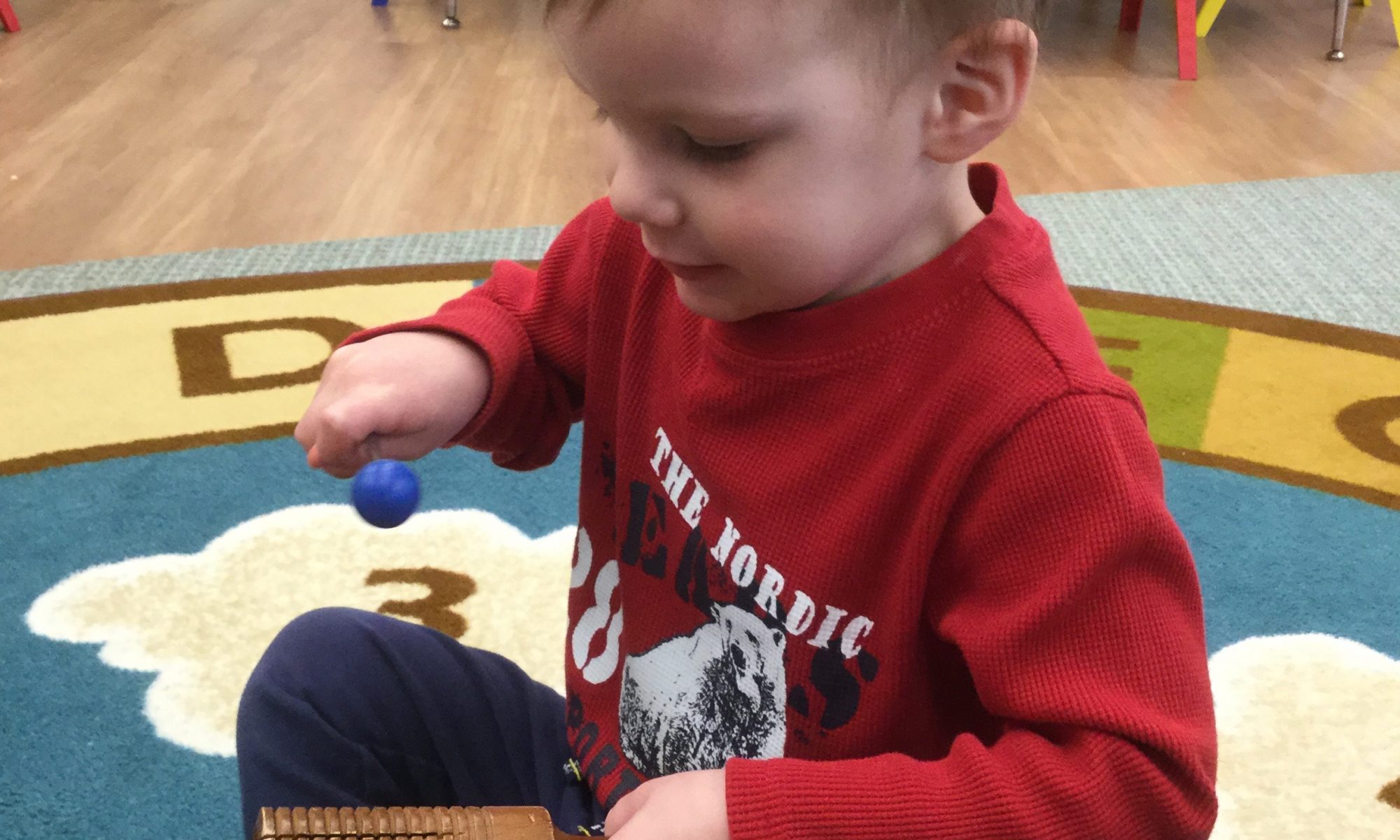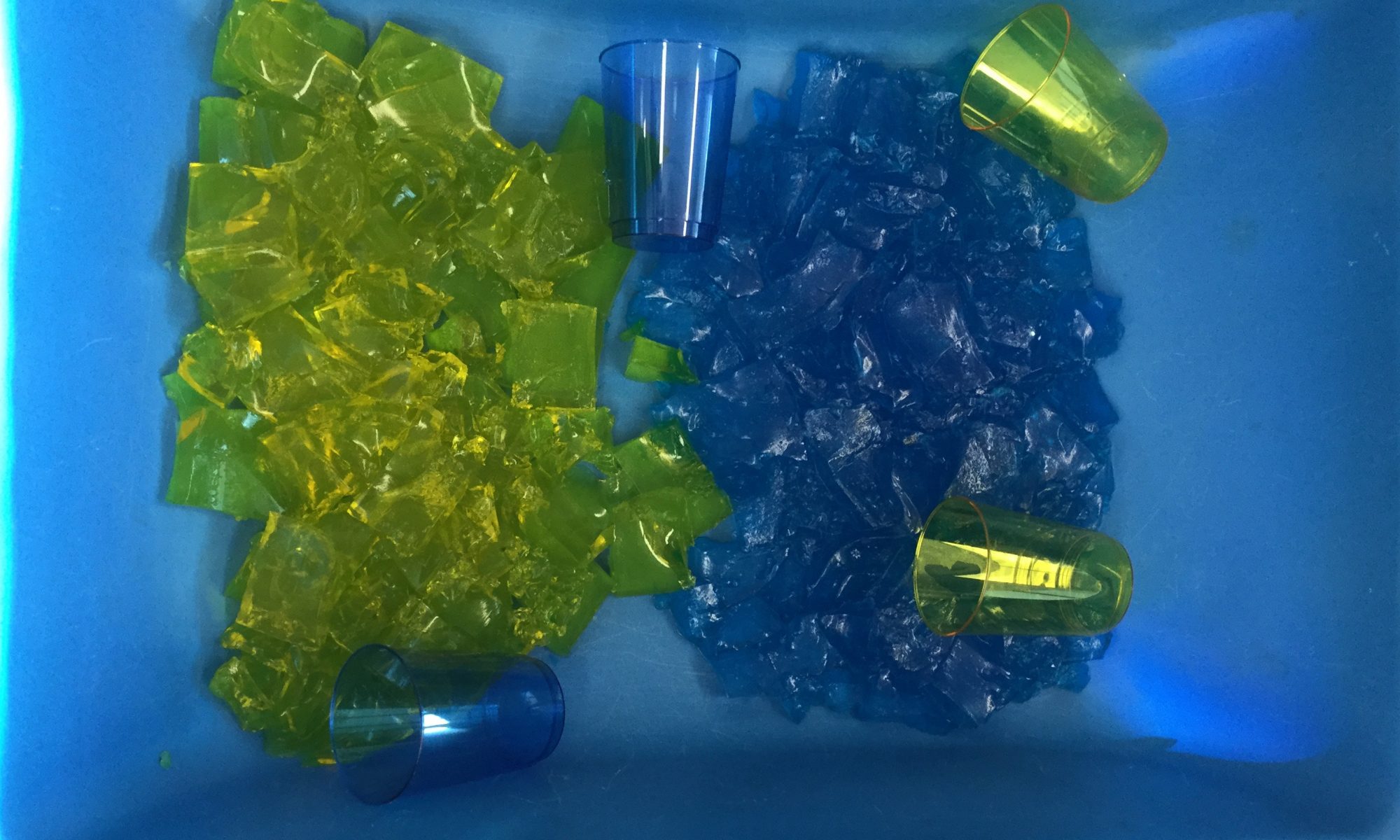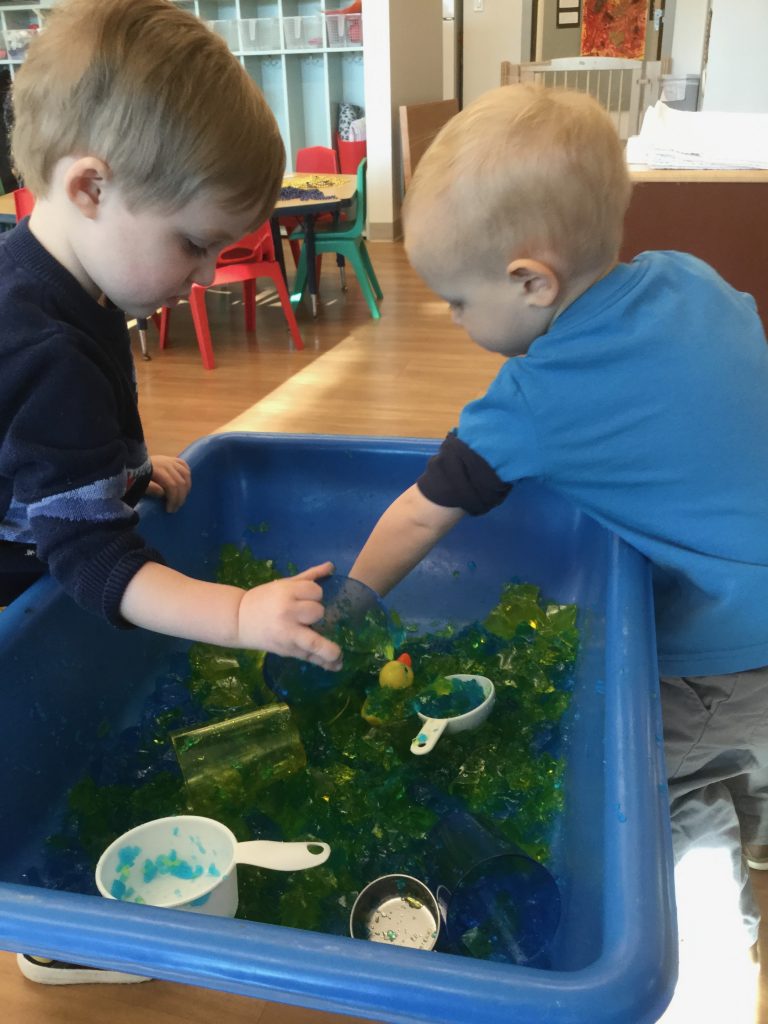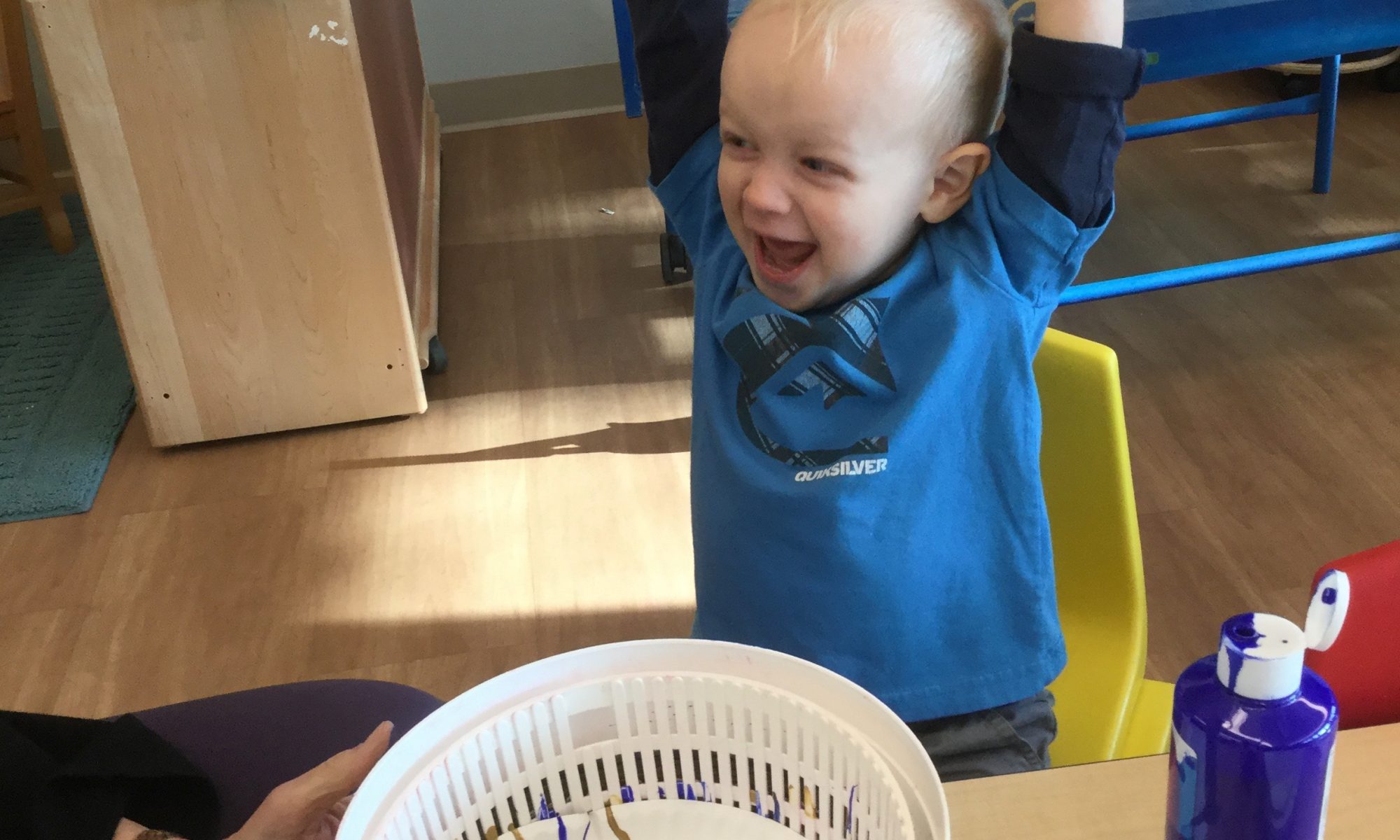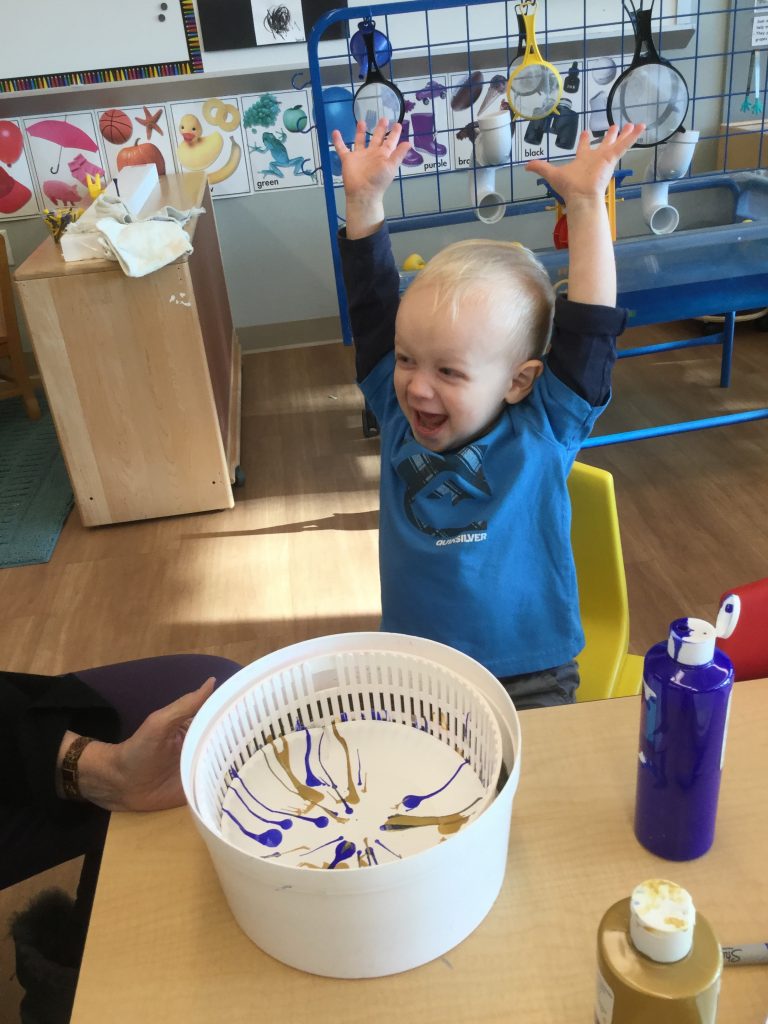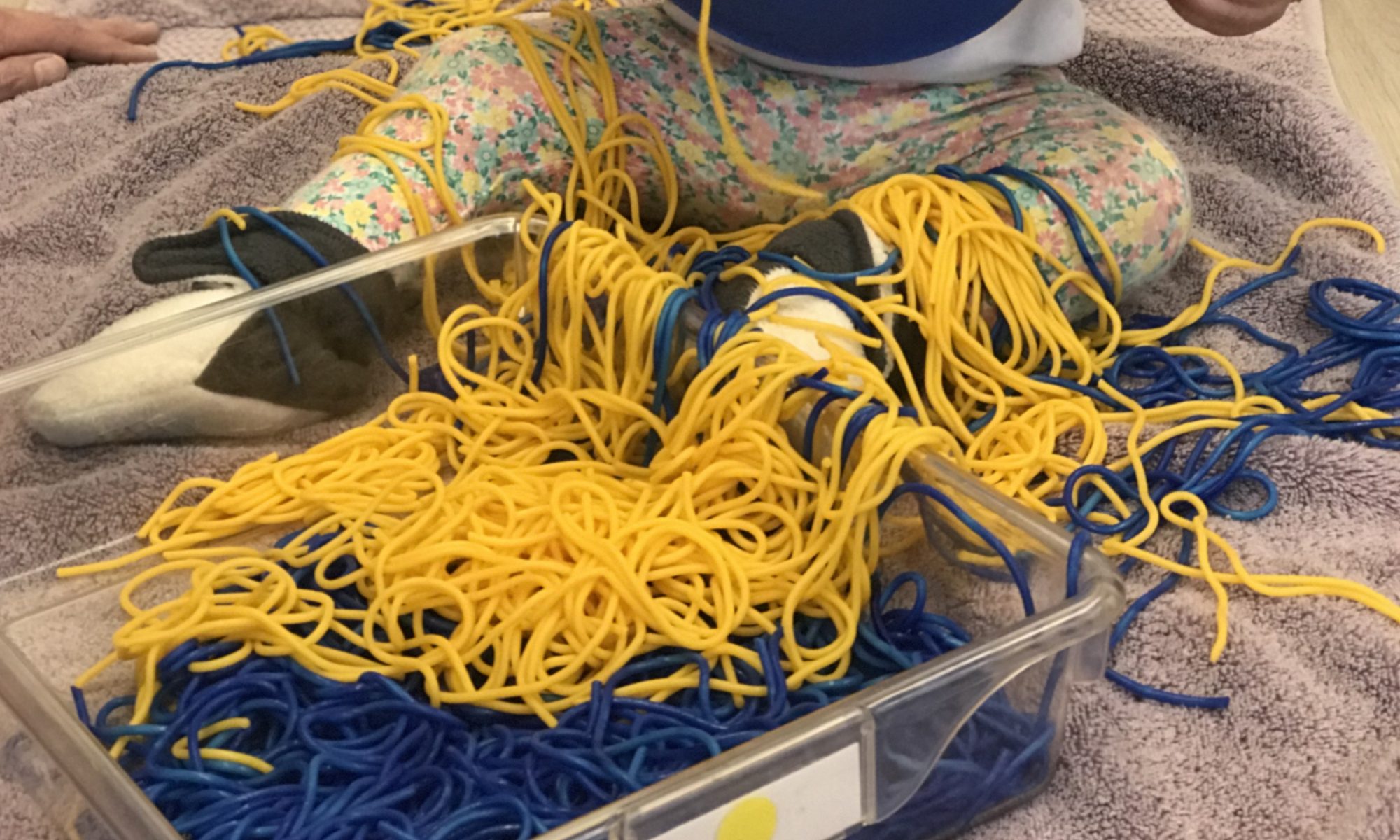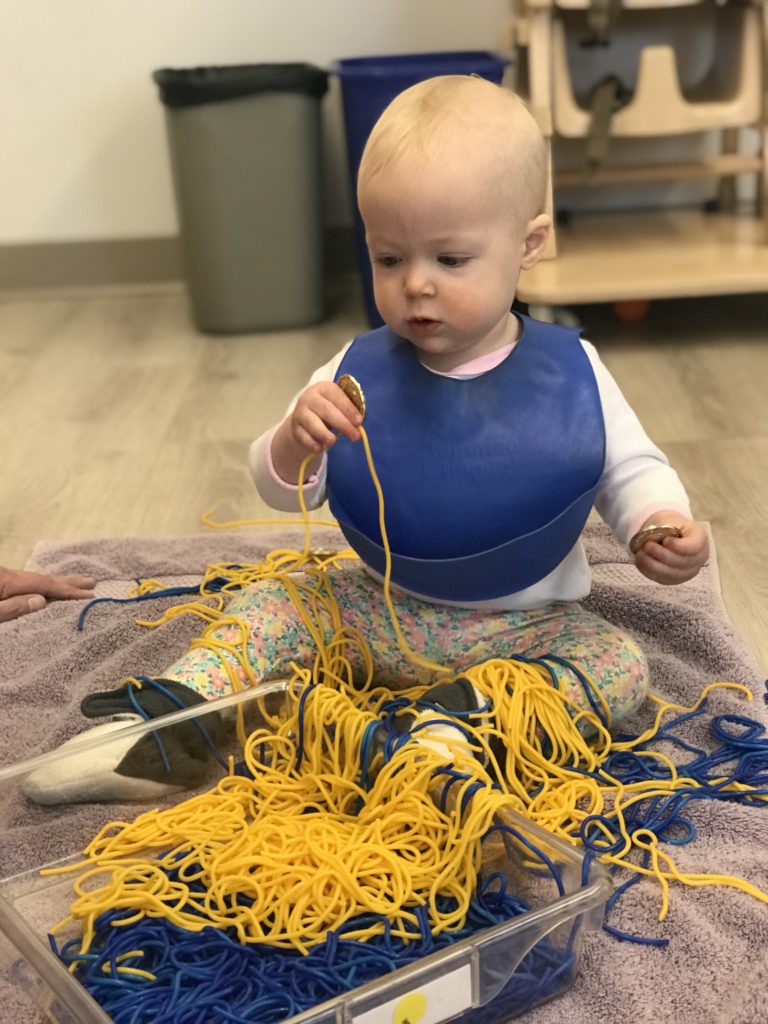Materials:
Colored rice
Small plastic pink hearts and red hearts from a dollar store
A sheet of paper with pink and red hearts printed all over it
Tongs (optional)
Directions:
You can put white rice in a casserole dish or a tub. If you prefer to color it, put the white rice (about 2 cups at a time) in a Ziploc bag. Add a few drops of food coloring and a teaspoon of white vinegar to the Ziploc before sealing it completely. Once sealed, squeeze the bag with your hands continuously until the color is evenly distributed throughout. Spread the colored rice out to dry on a piece of newspaper or wax paper. It should dry in about an hour.
Make a heart sheet similar to the one in the picture by printing clipart hearts from your computer. It’s helpful to make the hearts on your sheet about the same size as the plastic hearts. Make half of the hearts red, the other half spink. Once the rice is in a container, bury several red hearts and pink hearts in the rice.
Challenge your child to use the tongs to find a heart and place it on the correct color heart on the sheet. If the tongs are too hard to use, let him place the heart using his fingers. It’s still a valuable fine-motor skill to practice the pincer grip to pick up and place the heart on the sheet. If you choose to work with your child, find a heart yourself and place it on the sheet. The more you are engaged in what your child is doing, the longer the activity will hold his interest!
